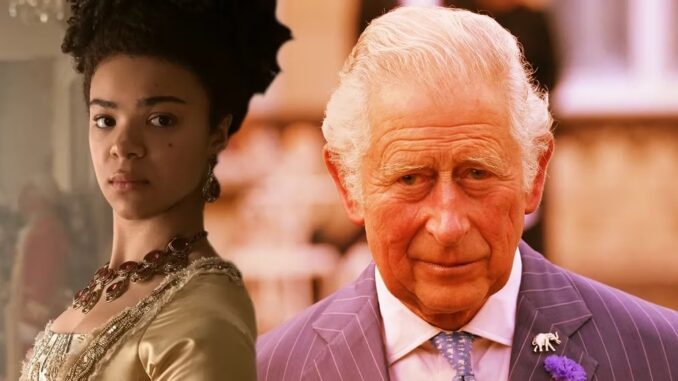
How Is Bridgerton’s Queen Charlotte Related To The Current King?
Although the Bridgerton franchise is a work of historical fiction, a direct line can be drawn between Queen Charlotte and the current King of England.
The Netflix original series, Queen Charlotte: A Bridgerton Story, tells the history of the titular monarch and a direct line can be drawn between Charlotte and the current King of England, Charles III. Expounding upon the popular character and historical figure from Bridgerton, the series explores her marriage to King George III and how her shaped the future of the English monarchy. The six-episode series not only adds to the story of Bridgerton but allows the character of Charlotte to take center stage in a way that pays homage to elements of history and keeps with the fresh and romantic tone of the franchise.
Although the show plays somewhat fast and loose with facts from history, the clever and somewhat true reimagining of the past makes the story fresh and interesting in a way that has sparked curiosity about the lineage of the English crown. Unlike its predecessor, Queen Charlotte touches on issues of race in 18th-century England and reflects real-life questions about whether Queen Charlotte was Black. While Bridgerton was a fun and romantic spin on history, Queen Charlotte aims to address certain historical controversies surrounding the royal family, which draws strong parallels with the modern day.
Who Was Queen Charlotte’s Successor To The Throne?
Following her marriage to King George III in September 1761, the German-born Charlotte of Mecklenburg-Strelitz became Queen of the United Kingdom of Great Britain and Ireland. Across her 57-year marriage, Queen Charlotte had 15 children, with only 13 surviving to become adults. Their eldest son, George IV, served as Prince Regent to the throne, starting in 1811 while his father battled with the mental health disorder that plagued him throughout his life. Finally, George IV would ascend to the throne after his father’s passing in January 1820. King George IV’s reign was rather short-lived though, as he would die only 10 years after taking the crown in 1830.

Following King George IV’s death, the crown went to another of Queen Charlotte’s children because the former George IV left no heir. King William IV was crowned in 1830, and his short reign saw the abolition of slavery in most of the British Empire; he also oversaw several major labor reforms that affected the working class. William sired no legitimate heirs to the throne and his reign was cut short upon his death after only seven years in power. As such, the crown was passed on to King William IV’s niece, and Queen Victoria ushered in a new age for the English monarchy.
Queen Victoria Is Queen Charlotte’s Granddaughter
Following a brief two-decade period of short-lived monarchs, Queen Victoria took the throne in 1837 and will hold the crown until the 20th century. Queen Victoria was the daughter of Prince Edward, Duke of Kent and Strathearn who was the fourth son of the since-deceased King George III and Queen Charlotte. Charlotte and George III’s son, Prince Frederick, died in 1827 and when William IV took the throne upon his brother’s death in 1830, Victoria became the heir presumptive (which meant she was next in line for the crown).
Upon assuming her place as Queen, Victoria began what would become the longest reign in the history of the British monarchy before Queen Elizabeth II broke her record by reigning for 70 years. Lasting from the year 1837 to 1901, Queen Victoria’s reign oversaw the massive expansion of the British Empire around the globe, as well as the rapid industrialization that completely changed the economy of Great Britain. Victoria’s reign was so long that the period of English history is known as the Victorian Era, and it is evocative of certain movements within art, literature, and fashion.
The Royal Line From Queen Victoria To King Charles (Including The Abdication)
Although Queen Charlotte’s granddaughter, Queen Victoria, acclaimed the throne through a complicated series of apparent heirs, Victoria’s replacement was much more straightforward. Upon her death at the age of 81 in 1901, her son Edward VII ascended to the throne. Because of his mother’s lofty reign, Edward VII became King at the age of 59 and only held the crown until 1910 when he too passed away at the age of 68. Edward VII was succeeded by his only surviving son, George V, reign whoed as King until 1936 when he died at the age of 70.
Well over a century after season 1 of Bridgerton takes place, King George V’s successor takes the throne in the form of his eldest son, King Edward VIII. Unlike his great-grandmother Queen Victoria, King Edward VIII’s reign was extremely brief, and he voluntarily abdicated the throne in December 1936 after only serving as King since January of that same year.
